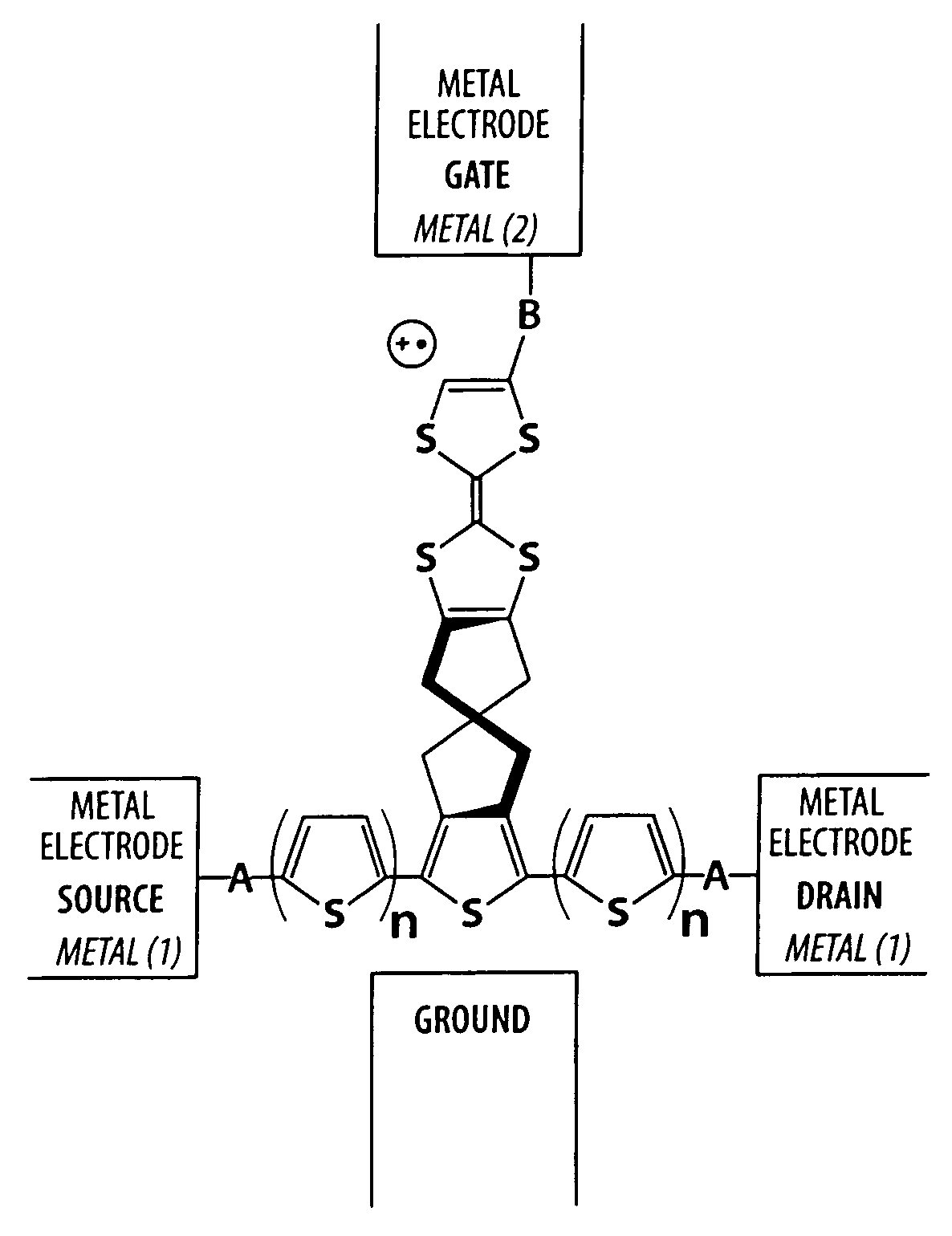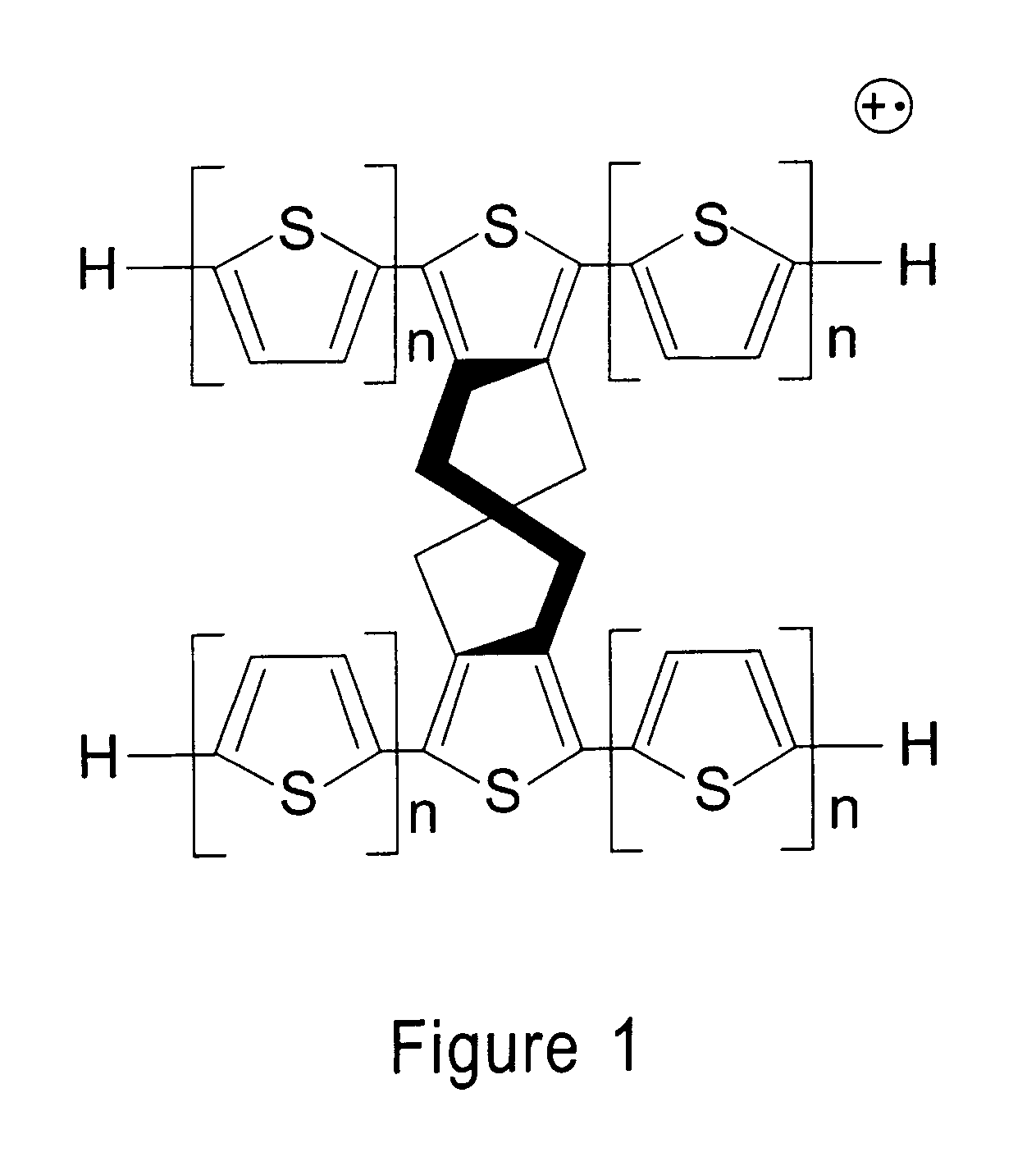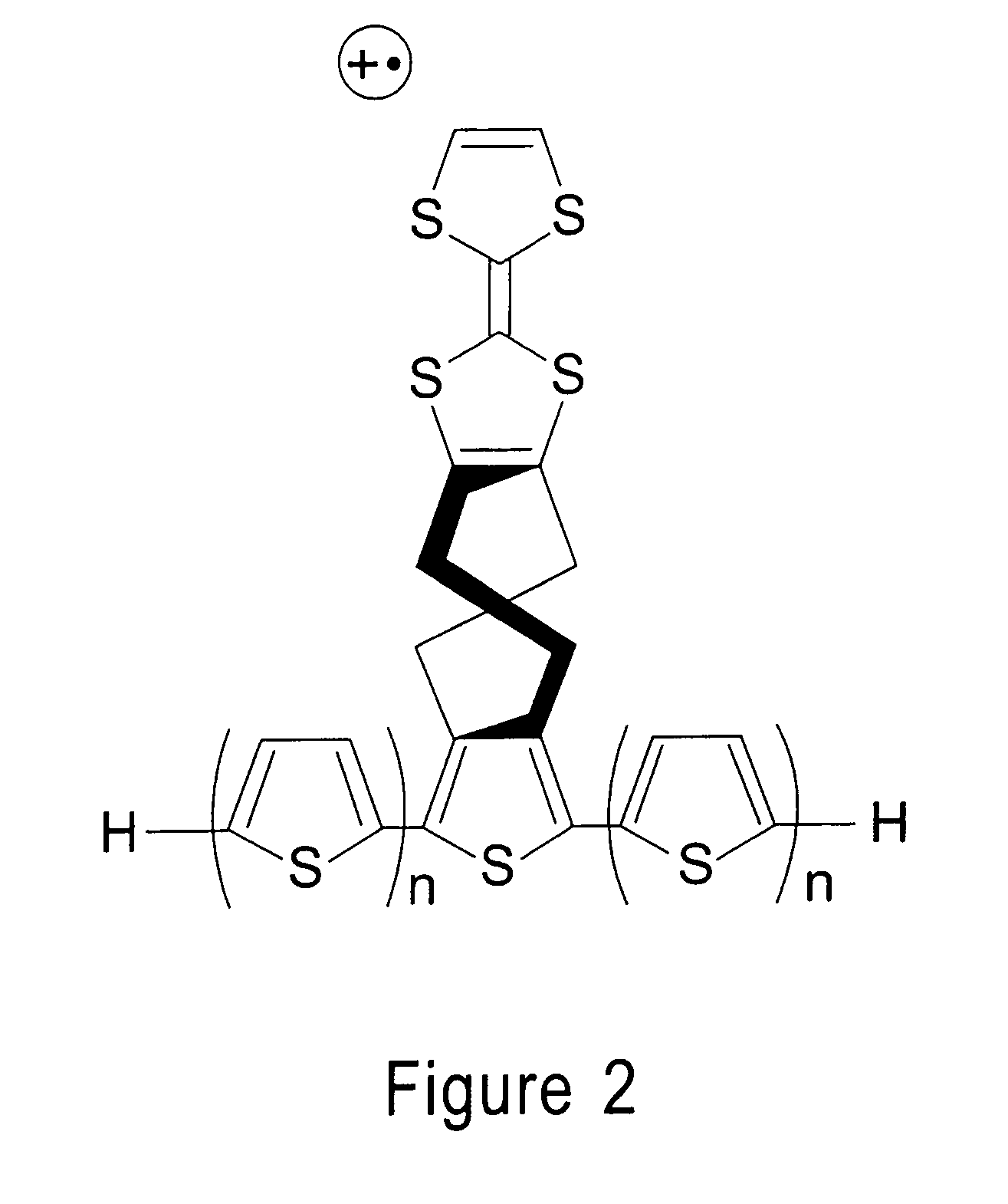Electrical contacts for molecular electronic transistors
a technology of electronic transistors and electrical contacts, which is applied in thermoelectric devices, solid-state devices, and nano-informatics. it can solve the problems of increasing the difficulty of further miniaturizing devices via conventional semiconductor fabrication, increasing the cost of associated devices, and consuming very little power, and achieves increased circuit density, high cost-effectiveness, and large storage capacity.
- Summary
- Abstract
- Description
- Claims
- Application Information
AI Technical Summary
Benefits of technology
Problems solved by technology
Method used
Image
Examples
example 1
[0071]First, a molecule such as that depicted in FIG. 2 can be “wired” as a transistor by distinguishing between the source / drain metallurgy and the gate metallurgy, and by providing the proper alligator clips to direct the molecule toward the proper connection. The alligator clips on the source / drain chain are —SH groups. The alligator clip on the gate chain is a phosphate group. Initially the oxidation state of the molecule is neutral.
[0072]A metal-electrode pattern is then provided on an insulating surface with gaps in locations where the molecules belong. Importantly, the size of the gap is tailored to fit the length of the molecule. The metallurgy is chosen according to several considerations, including the following:
[0073]The gate electrode is fabricated from aluminum, which couples specifically to the phosphate alligator clip on the molecule (gate chain). The source / drain electrodes are fabricated from platinum in this mode, which couples specifically to the —SH alligator cli...
example 2
[0075]Second, the molecule depicted in FIG. 2 can be prepared in a doubly-oxidized state, with two electrons missing. In this case, the wiring proceeds much in the manner of that described in EXAMPLE 1. However, the electrochemistry step is that of reduction; as a negative voltage is applied.
example 3
[0076]Next, the circuit is obtained in the same way as described with regard to EXAMPLE 1, in this instance with photochemical oxidation. The oxidation step is accomplished by following the procedure for assembling the circuit that is described in EXAMPLE 1.
[0077]Specifically, the chip is immersed in a concentrated solution containing the molecules shown in FIG. 2, followed by rinsing. Once the molecules are in place, the circuit is preferably immersed in carbon tetrachloride and irradiated with UV radiation. Photochemical oxidation then occurs, and the mixed-valence state is formed.
PUM
| Property | Measurement | Unit |
|---|---|---|
| temperature | aaaaa | aaaaa |
| size | aaaaa | aaaaa |
| length | aaaaa | aaaaa |
Abstract
Description
Claims
Application Information
 Login to View More
Login to View More - R&D
- Intellectual Property
- Life Sciences
- Materials
- Tech Scout
- Unparalleled Data Quality
- Higher Quality Content
- 60% Fewer Hallucinations
Browse by: Latest US Patents, China's latest patents, Technical Efficacy Thesaurus, Application Domain, Technology Topic, Popular Technical Reports.
© 2025 PatSnap. All rights reserved.Legal|Privacy policy|Modern Slavery Act Transparency Statement|Sitemap|About US| Contact US: help@patsnap.com



